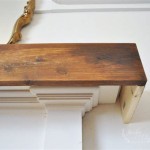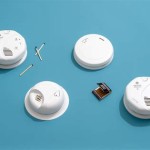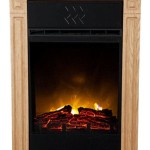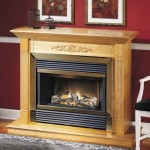Building a Gas Fireplace Surround: A Comprehensive Guide
A gas fireplace adds warmth and ambiance to a home. Enhancing its aesthetic appeal can be achieved by constructing a surround that complements the existing décor. This article provides a detailed guide on building a gas fireplace surround, covering design considerations, material selection, construction techniques, and safety precautions.
Planning and Design
The first step in building a gas fireplace surround involves meticulous planning and design. This includes determining the desired style, size, and materials, as well as ensuring compliance with local building codes and manufacturer specifications for the gas fireplace.
Style Considerations: Fireplace surrounds can range from simple, minimalist designs to elaborate, traditionally styled structures. Common styles include modern, rustic, traditional, and contemporary. The chosen style should harmonize with the overall aesthetic of the room. Modern designs often feature clean lines and smooth surfaces, while rustic styles may incorporate natural stone or reclaimed wood. Traditional designs typically include intricate molding and detailed ornamentation.
Size and Proportions: The dimensions of the surround should be proportionate to the fireplace and the surrounding wall. A surround that is too small may appear insignificant, while one that is too large can overwhelm the space. Consider the height of the ceiling and the width of the wall when determining the overall size. A general guideline is to maintain a balance between the fireplace opening, the surround, and the surrounding wall.
Material Selection: A variety of materials can be used to construct a fireplace surround, including wood, stone, tile, and metal. Each material offers unique aesthetic and functional properties. Wood is a popular choice due to its versatility and warmth. Stone provides a sophisticated and durable option. Tile offers a wide range of colors and patterns. Metal can create a sleek, modern look. When selecting materials, consider factors such as cost, durability, ease of installation, and fire resistance. It is crucial to use non-combustible materials for the immediate area surrounding the firebox, often referred to as the “non-combustible zone.”
Code Compliance and Manufacturer Specifications: Before beginning construction, it is essential to consult local building codes and the gas fireplace manufacturer's specifications. These documents outline specific requirements for clearances, venting, and material selection. Failure to comply with these regulations could result in safety hazards or code violations. Pay particular attention to the required clearances between the fireplace and combustible materials. These clearances are designed to prevent overheating and potential fires. The manufacturer's specifications will also provide guidance on the proper installation of the fireplace itself, which is critical for safe and efficient operation.
Creating a Detailed Plan: Once the design considerations have been addressed, create a detailed plan that includes measurements, material lists, and construction drawings. This plan will serve as a roadmap throughout the construction process. The plan should clearly indicate the dimensions of each component, the type and quantity of materials needed, and the sequence of construction steps. A well-defined plan will help to minimize errors and ensure a smooth and efficient build.
Construction Techniques
The construction of a gas fireplace surround involves several key steps, including framing, sheathing, installing the non-combustible zone, cladding, and finishing. Each step requires careful attention to detail and adherence to safety precautions.
Framing: The frame provides the structural support for the surround. It is typically constructed from wood studs or metal studs. Wood studs are easier to work with and are suitable for most applications. Metal studs are more fire-resistant and are often required in areas where there are stringent fire codes. The frame should be securely attached to the wall using screws or nails. Ensure that the frame is plumb and level to create a solid foundation for the rest of the surround. Special attention should be paid to creating a sturdy frame around the firebox opening, ensuring it meets the required dimensions. Proper framing is critical for the overall stability and appearance of the surround.
Sheathing: Sheathing provides a smooth, even surface for attaching the cladding materials. Common sheathing materials include plywood or cement board. Plywood is suitable for areas that are not directly exposed to heat. Cement board is a fire-resistant material that is ideal for the non-combustible zone. The sheathing should be securely attached to the frame using screws or nails. Ensure that the sheathing is properly aligned and that there are no gaps or overlaps. The sheathing should extend beyond the frame to provide a surface for attaching the trim.
Installing the Non-Combustible Zone: The non-combustible zone is the area immediately surrounding the firebox opening that must be constructed from fire-resistant materials. This zone is typically defined by the gas fireplace manufacturer and local building codes. Common non-combustible materials include cement board, metal studs, and fire-rated tile. The non-combustible materials should be installed according to the manufacturer's instructions. Ensure that all seams and joints are properly sealed to prevent the passage of heat. The non-combustible zone is critical for preventing fires and ensuring the safe operation of the gas fireplace.
Cladding: Cladding is the decorative layer that covers the sheathing. It can be made from a variety of materials, including wood, stone, tile, or metal. The cladding should be chosen to complement the overall style of the room. Wood cladding can be painted or stained to match the existing décor. Stone cladding provides a natural, rustic look. Tile cladding offers a wide range of colors and styles. Metal cladding creates a sleek, modern appearance. The cladding should be securely attached to the sheathing using adhesive or fasteners. Ensure that the cladding is properly aligned and that there are no gaps or overlaps. The cladding is the finishing touch that transforms the functional frame into an aesthetically pleasing surround.
Finishing: Finishing involves adding trim, molding, and other decorative elements to the surround. Trim can be used to conceal the edges of the cladding and to create a more polished look. Molding can be used to add detail and character to the surround. Other decorative elements, such as mantels, shelves, and corbels, can be added to further enhance the aesthetic appeal. The finishing touches should be carefully chosen to complement the overall style of the room. Ensure that all finishing elements are securely attached and that they are properly aligned. Proper finishing can make a significant difference in the overall appearance of the gas fireplace surround.
Safety Precautions
Safety is paramount when building a gas fireplace surround. Adhering to safety precautions is crucial to prevent accidents and ensure the safe operation of the fireplace.
Electrical Safety: If the gas fireplace has electrical components, ensure that the power is turned off before beginning any work. Use insulated tools when working with electrical wiring. Follow all electrical codes and regulations. If you are not comfortable working with electricity, consult a qualified electrician. Improper electrical work can create a serious safety hazard.
Ventilation: Ensure that the gas fireplace is properly ventilated according to the manufacturer's specifications. Proper ventilation is essential for preventing the buildup of carbon monoxide, a deadly gas. Do not block or obstruct the ventilation openings. If you are unsure about the proper ventilation requirements, consult a qualified HVAC professional.
Fire Safety: Use fire-resistant materials for the non-combustible zone. Maintain the required clearances between the fireplace and combustible materials. Install a smoke detector and carbon monoxide detector in the vicinity of the fireplace. Keep flammable materials away from the fireplace. Regularly inspect the fireplace and the surrounding area for any signs of damage or wear. Fire safety is crucial for preventing fires and protecting your home and family.
Gas Line Safety: If you need to disconnect or modify the gas line, consult a qualified gas technician. Do not attempt to work on the gas line yourself unless you are properly trained and certified. Gas leaks can be extremely dangerous and can lead to explosions or carbon monoxide poisoning. Always use a gas leak detector to check for leaks after working on the gas line.
Personal Protective Equipment: Wear appropriate personal protective equipment (PPE) when working on the gas fireplace surround. This may include safety glasses, gloves, and a dust mask. Safety glasses will protect your eyes from debris. Gloves will protect your hands from cuts and abrasions. A dust mask will protect your lungs from dust and other airborne particles. Proper PPE can help to prevent injuries and ensure a safe working environment.
By following these guidelines and safety precautions, a homeowner can successfully build a gas fireplace surround that enhances the aesthetic appeal of their home while ensuring the safe and efficient operation of the fireplace. However, it is always recommended to consult with qualified professionals, such as contractors, gas technicians, and building inspectors, to ensure compliance with all applicable codes and regulations.

Diy Gas Fireplace Surround Modern Remodel

How To Install A Gas Fireplace Framing Finishing Tylynn M

Custom Built Fireplace Surround Install A New Mantel Hearth

How To Install A Gas Fireplace With Tile Surround And Wood Mantel Sima Spaces

7 Fireplace Surround Ideas That Will Ignite The Room

How To Install A Gas Fireplace With Tile Surround And Wood Mantel Sima Spaces

I Built A Fireplace Easier Than Thought

How To Build A Modern Fireplace Surround Hana S Happy Home

How To Build A Fireplace Surround Beneath My Heart

How To Modernize And Update A Gas Fireplace We Love Fire








